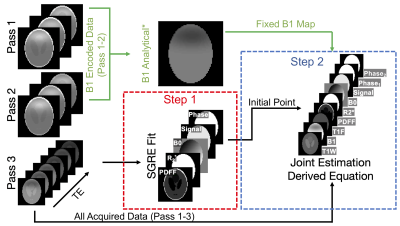Nathan Tibbitts Roberts1,2, Diego Hernando1,3, Daiki Tamada1, and Scott B Reeder1,3,4,5,6
1Radiology, University of Wisconsin - Madison, Madison, WI, United States, 2Electrical and Computer Engineering, University of Wisconsin - Madison, Madison, WI, United States, 3Medical Physics, University of Wisconsin - Madison, Madison, WI, United States, 4Biomedical Engineering, University of Wisconsin - Madison, Madison, WI, United States, 5Medicine, University of Wisconsin - Madison, Madison, WI, United States, 6Emergency Medicine, University of Wisconsin - Madison, Madison, WI, United States
1Radiology, University of Wisconsin - Madison, Madison, WI, United States, 2Electrical and Computer Engineering, University of Wisconsin - Madison, Madison, WI, United States, 3Medical Physics, University of Wisconsin - Madison, Madison, WI, United States, 4Biomedical Engineering, University of Wisconsin - Madison, Madison, WI, United States, 5Medicine, University of Wisconsin - Madison, Madison, WI, United States, 6Emergency Medicine, University of Wisconsin - Madison, Madison, WI, United States
Fat and B1 are known confounders of quantitative T1 mapping. In this work we propose a hybrid variable flip angle, B1 mapping, and chemical shift encoded MRI acquisition to estimate T1, fat-fraction, and R2* while simultaneously estimating and correcting for both B0 and B1 inhomogeneities.

Figure 2. Fat- and B1- corrected T1W is estimated using a two-step fitting. In the first step, data from pass 3 are used in a non-T1 weighted multi-echo SGRE fitting to determine an initial point for the joint estimation. In the second step, the derived signal model is used in a non-linear least squares fitting of all data to estimate parameters, including T1W, T1F, signal amplitude, signal phases (shared pass 1&2 / independent pass3), R2*, PDFF, B1 and B0. *For acquisitions without fat, B1 can be calculated analytically10 and fixed in the following joint estimation (shown in green).

Figure 5. T1W estimates in gel agar phantom experiments (A) showed good agreement with the phantom design values (B) and decent agreement with STEAM-MRS measurements (C). Global B1 errors were introduced by manipulating the transmit gain (TG) at scan time. Plots (B,C) show that T1W estimation bias is greatly reduced by the proposed simultaneous B1 estimation, but not entirely removed.